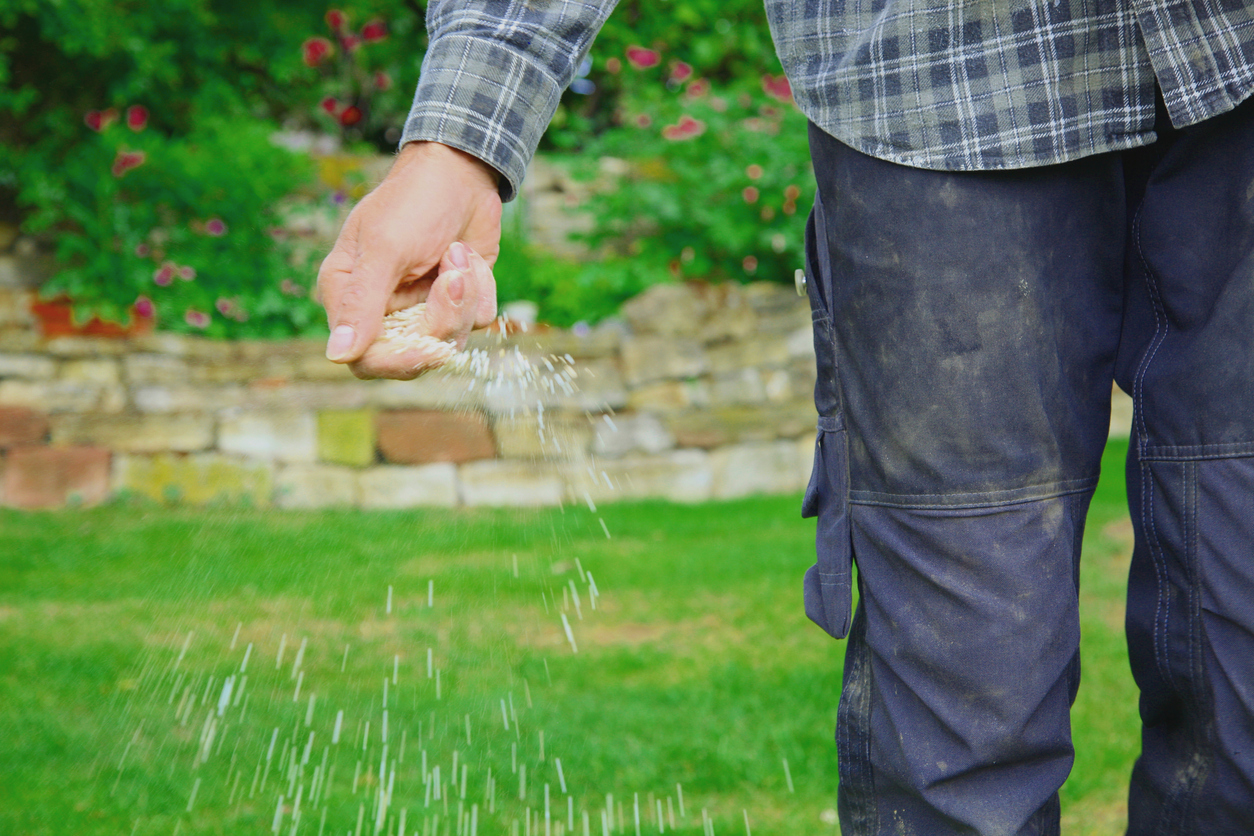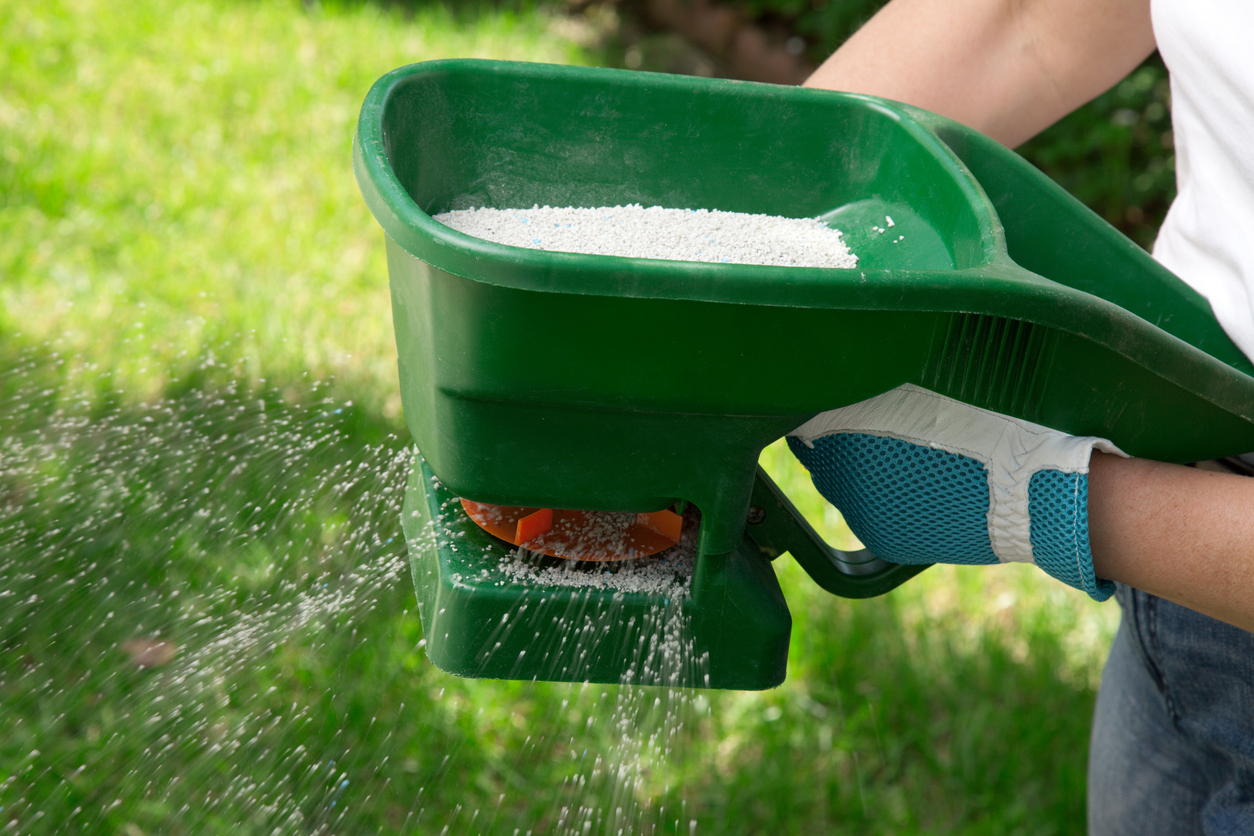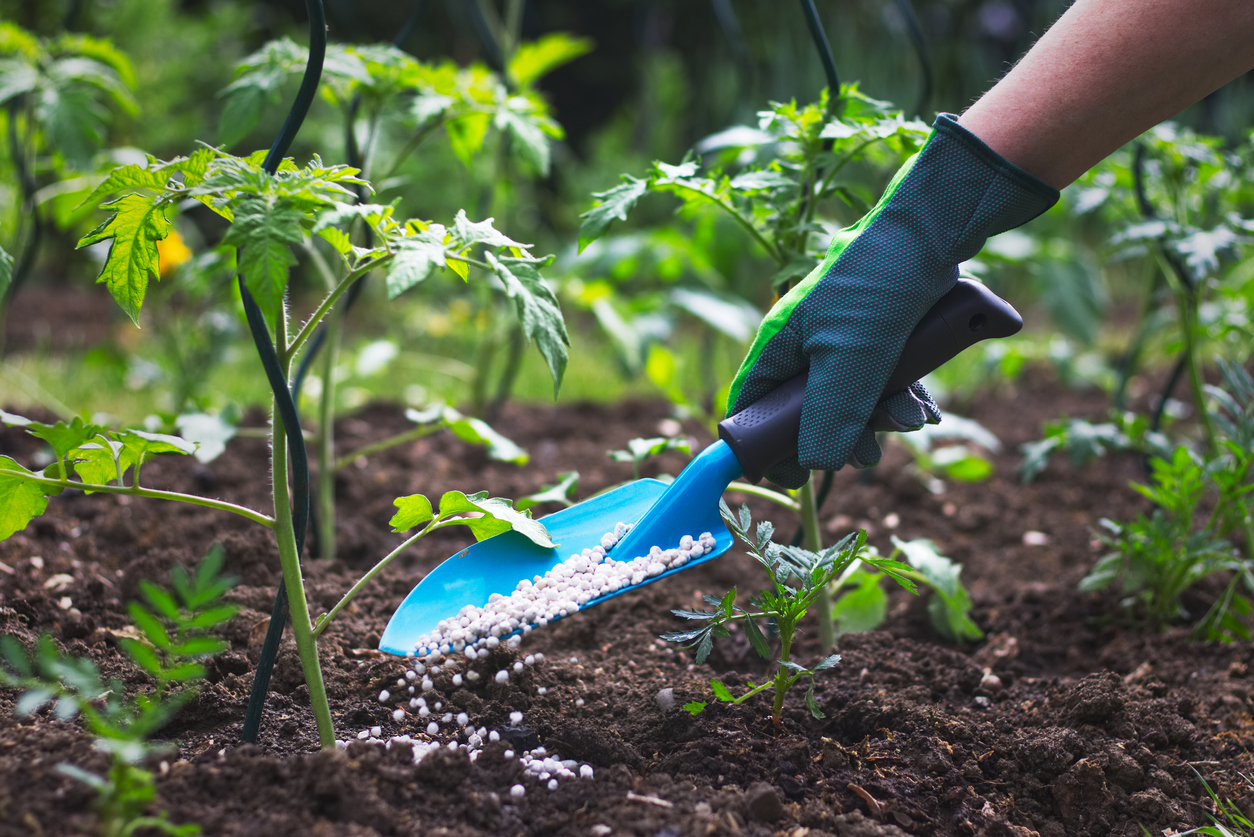
Different ways to apply compost and commercial fertilizer
Broadcasting and side banding
How you choose to apply your fertilizer will depend on the type of fertilizer you are using, what plants you're applying it to and what tools you have available. Commercial fertilizers will come in a package that has application instructions on them. You must read these instructions and follow the application quantity, or you will risk harming your plants and soil. If you're unsure of the right quantity to apply, less is better than too much. Organic fertilizers, such as compost, have a lower risk of over-application but often don't come with clear instructions (or any instructions at all, as is often the case with compost).
Whether you're selecting organic or synthetic fertilizers, it may not be necessary to use fertilizers all of the time. Yes, this caution applies to compost. Even at moderate levels of over fertilizing, plants may look vigorous but their hardiness, pest and disease tolerance and yields will be reduced. You cannot know how much fertilizer you need without a soil test, but below are some good general assumptions.
Woody plants and perennial beds
Mature trees and woody shrubs are expected to live in native soils long term, without ongoing interference. While you may need to water in drought years, do not fertilize them.
When newly planting anything, do not add fertilizers (including compost) to the planting holes. If you're planting trees and shrubs, planting advice has changed significantly in the last few decades so review our tree planting guides to ensure long term health.
Perennial plants should be expected to survive without ongoing interference in a mulched environment. If you have a perennial bed, your fertilizing needs will depend heavily on your soil management style and soil history. Healthy soils that are not tilled and are mulched with arborist wood chip or other suitable woody mulch will typically have enough fertility to sustain a perennial bed indefinitely. As the mulch decays, it will ensure long term soil health and adequate fertility naturally. If your soil is unhealthy or you are not mulching, you may want to top-dress with compost before adding mulch. Top-dressing means to add a blanket of compost on top of the soil. It is not necessary to incorporate the compost as soil organisms will move it into the soil for you. Do not top-dress more than 5 cm (2 in) deep of compost annually, and do not add it on an ongoing basis, indefinitely. In typical prairie soils, we have sufficient nutrients in our local soils but lack healthy soil structure to allow the plants to access these nutrients. Mulch will allow the soil to form a healthy structure over time and other interventions are not necessary long term. This does take time to establish, especially in damaged clay soils.
Potted plants, seedlings and containers
If you are planting into potting mix, you will need to read the bag to determine if you need to fertilize. Potting mix is generally composed mostly of peatmoss or coir, which has no inherent fertility. Some manufacturers will add fertilizers for you, but most will not.
Seeds contain all the nutrients necessary to establish a young plant until it has grown two sets of new leaves. If you plant your seedlings outside in the dirt before this stage, you do not need fertilizers. Every other plant that is older than this will need fertilizers.
If you want to add fertility before planting, you can:
- mix compost with your potting mix before planting. Generally, a 10% mixture is enough. Remember compost is a slow-release fertilizer. You should reuse your potting mix each year for up to five years, but you may not need to add compost to it annually.
- mix a slow-release synthetic fertilizer granule with your potting mix before planting. Follow the label instructions for the recommended amounts, mix thoroughly and water before planting.
If you need to add fertility after planting, you can:
- side dress with compost (see image below). Side or top dressing means to apply a thin layer of compost either beside the plant or all over the top of the soil. A few tablespoons per plant is likely enough in most container situations. You can gently mix this in, but it isn't necessary to mix it completely.
- add a water soluble synthetic fertilizer to your watering can once a week. If using weekly, we recommend using at half of the recommended rate listed on the label.
In all cases, we do not recommend using any compost and water slurries or compost tea.
Lawns
On lawns, to apply granular fertilizer or compost,
Vegetable and annual flower beds
In vegetable gardens and annual flower beds, synthetic fertilizer may be applied in several ways. Fertilizer can be:
- Broadcast and thoroughly incorporated into the upper 7 to 8 cm (3 in) of soil in spring prior to planting
- Side-dressing (see image below). that is, incorporated along the sides of each row and about 5 cm (2 in) deep. This involves more work but is more efficient because less fertilizer is used.
- Placed around each plant, 5
cm (2 in) away and 5 cm (2 in) deep. This last method is even more "labor intensive
If you are using compost, it is unnecessary to mix it with the soil. Soil microbes and other soil organisms will work the compost into the soil for you if it is in contact with the top of the soil. Compost can be added annually, if necessary, up to 2 - 3 cm (1 in) deep. If you are tilling, you can till this into your soil or you can simply leave it on top and then apply mulch. If you do not have enough compost to apply a 2 - 3 cm (1 in) blanket, you can use options 2 and 3 listed above.
Hand broadcasting

Broadcasting by machine

Side-dressing or placing fertilizer directly beside the plant. Fertilizer is then worked into the soil. Next, mulch is applied on top of soil.


